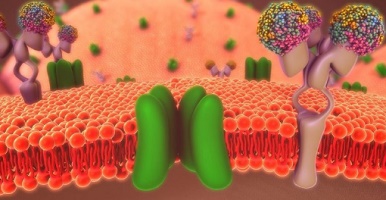What is Amyloplast?
Amyloplasts are organelles specialized in unpigmented granules that synthesize and store starch, formed by polymerization of the glucose molecule. They are found in the plant cells of some plants, especially in tubers and bulbs, such as potatoes.
They are essential for plants as they serve to store reserve material, since in situations of energy stress amyloplasts can break down starch into sugars that are used to nourish plant cells and tissues.
In laboratory experiments, scientists have also been able to observe starch degradation at very low temperatures (below 5 ° C), which is not observed at high temperatures (above 20 ° C), suggesting that cold it is more damaging to plant cells than heat.
In a more detailed analysis, using electron microscopy and electrophoresis techniques, it was observed that cold actually damages the membrane structure of amyloplasts, degrading proteins and important substrates, which affects the permeability of these cells and, consequently, releases their substance. cellular content in the cytoplasm.
Amyloplasts are a type of plastid that originates from leukoplasts.
There are several classes of plastids, all with specific functions and containing their own genetic material independent of that present in the nucleus of the plant cell.
Plastids are believed to have been independent organisms in the past (such as cyanobacteria) that were internalized by eukaryotic cells and began to form a symbiotic relationship with them.
In this way, all plastids share a similar evolutionary history, which is why they are differentiated forms of the same organelle (a proplastide that can be differentiated into chromoplasts, chloroplasts, leukoplasts, and amyloplasts).
Amyloplasts perform a similar function to chloroplasts, in that they also synthesize and accumulate photosynthetic pigments within themselves. In some cases, the differentiation of amyloplasts into chloroplasts has already been observed.
This happens, for example, with tubers when they are exposed to the sun: a portion of the potato begins to turn green, forming chloroplasts to carry out photosynthesis.
This is because, despite not having chlorophyll, amyloplasts have the precursor molecule for the synthesis of this pigment and, therefore, when exposed to light, they begin to synthesize chlorophyll and become photosynthetically active chloroplasts.
In addition to their function of storing reserve material, amyloplasts also intervene in the perception of gravity that plants have (called gravitropism).
In the terminal portion of the roots (hood) there is a central region, the columella, filled with special cells, the statocysts.
Within these, a large number of amyloplasts can be found, usually large and densely packed. These organelles move within the cytoplasm of the statocysts depending on the growth position of the root.
If it grows downwards, vertically and under gravity, the amyloplasts concentrate at the base (lower portion) of the cells of the columella. If the root develops laterally in the soil, in a horizontal position, the amyloplasts are placed on the side of the cell. Thus, it is said that the root columella acts on the perception of the gravitational orientation (gravitropism) of the plant.





